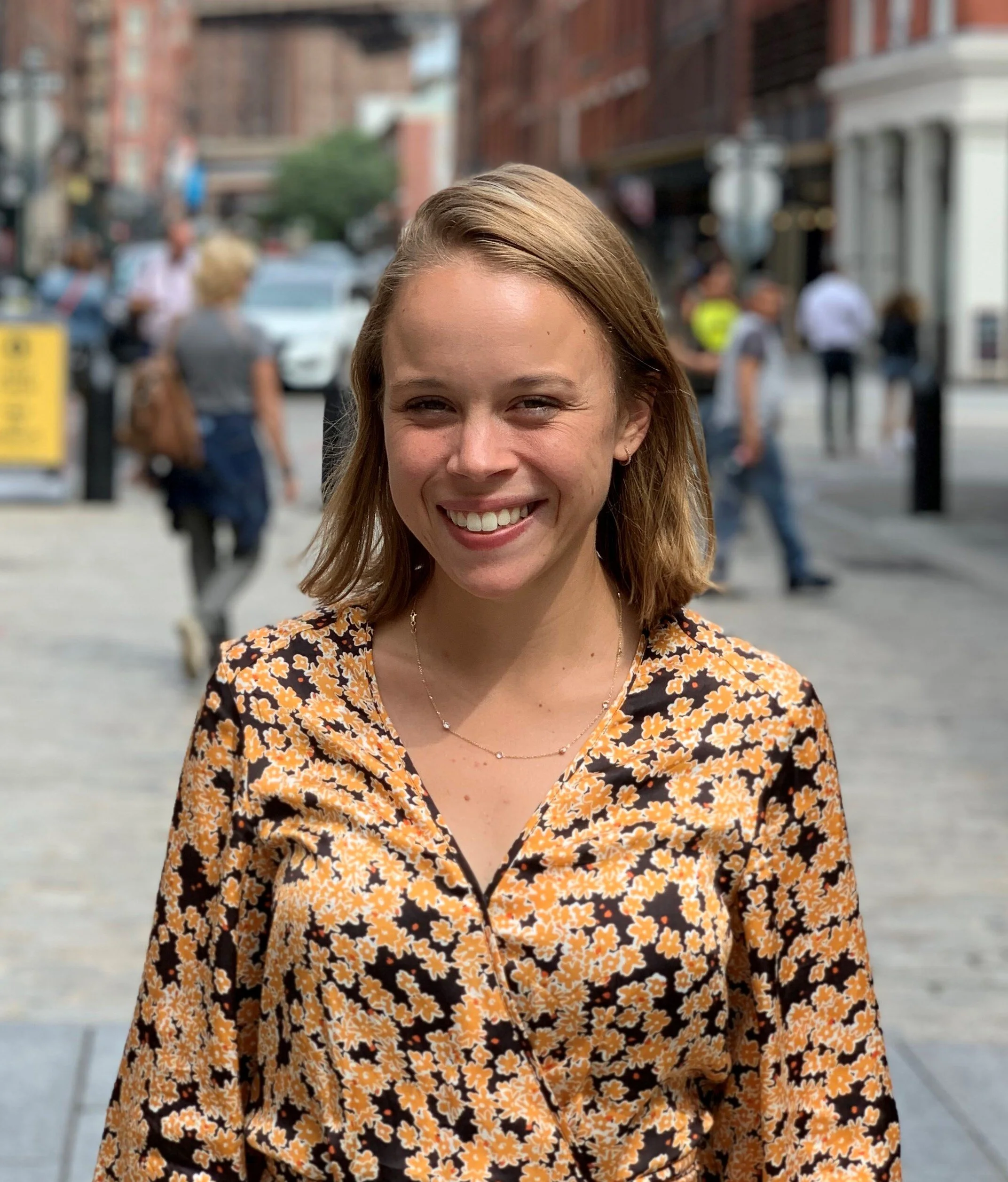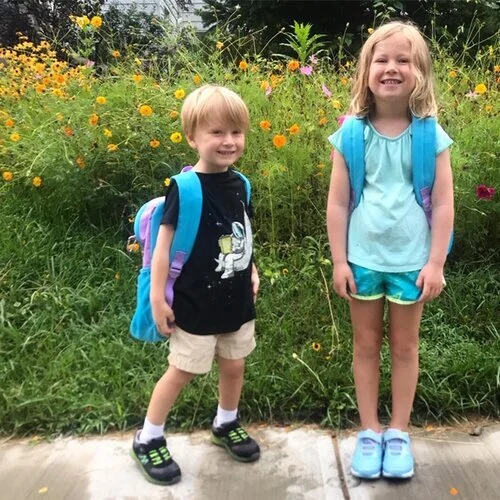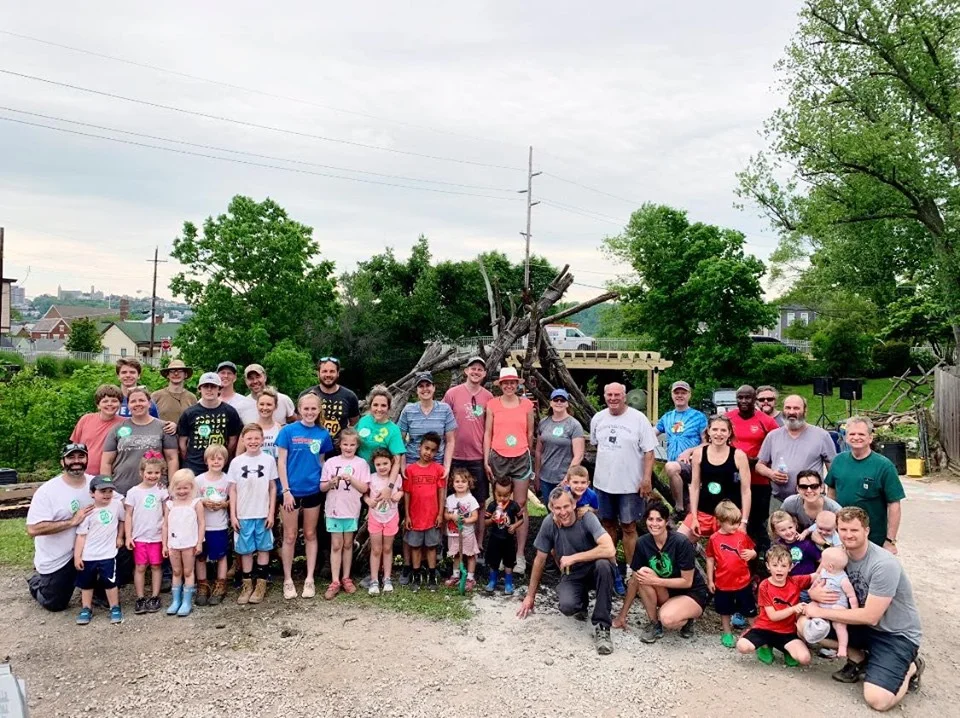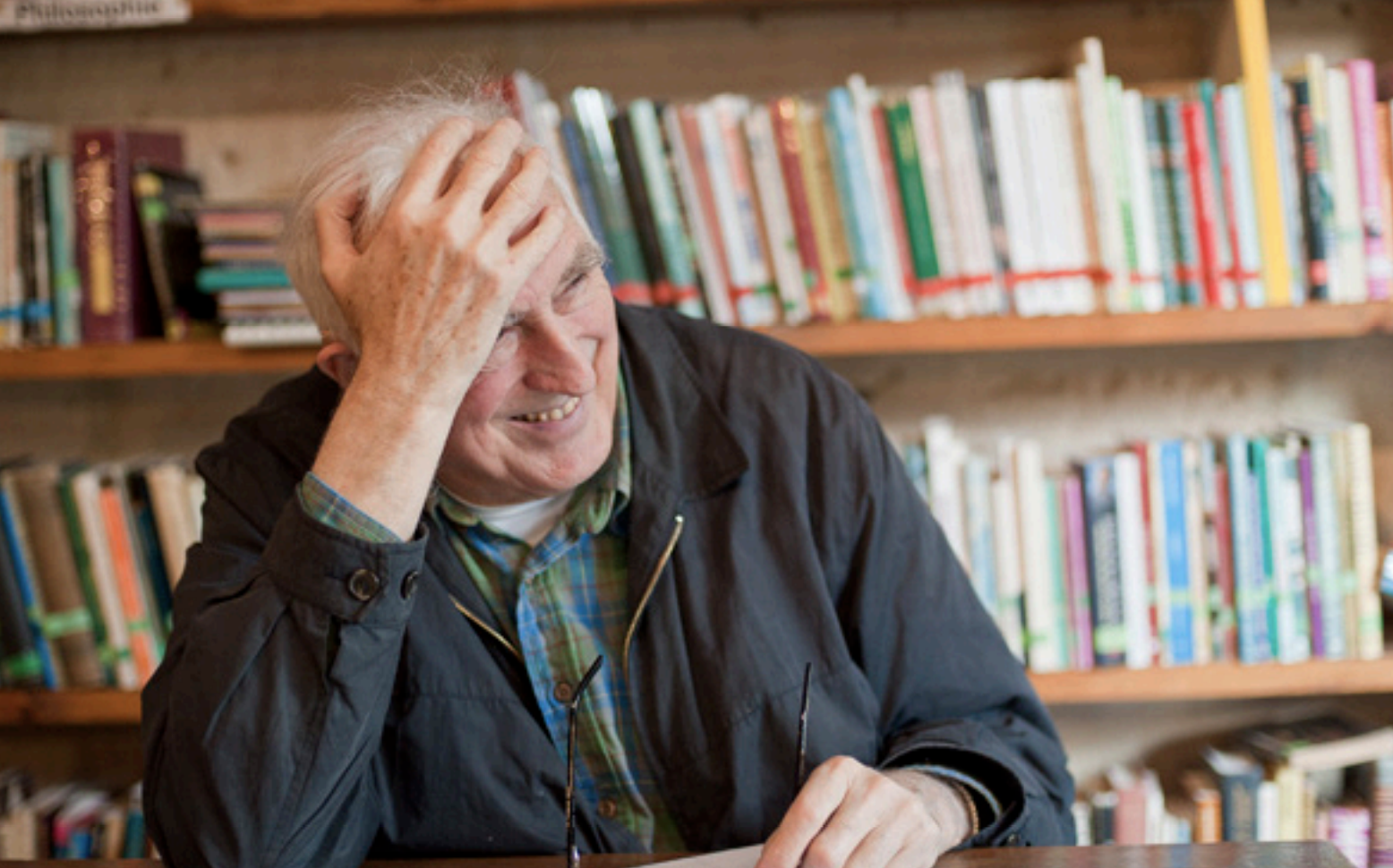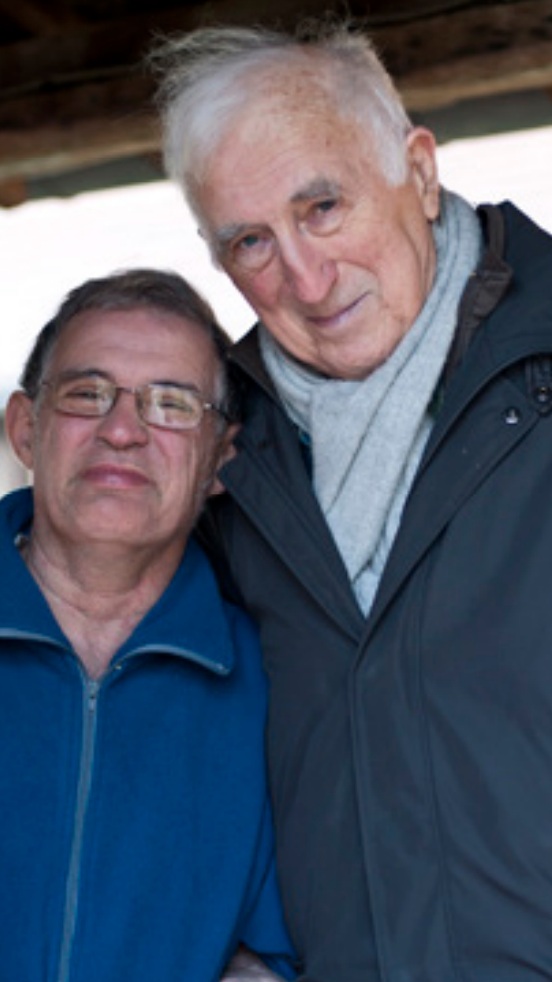EPISODE TRANSCRIPT:
1:11 - 2:31
Carole: My name is Carole and I’m passionate about Japanese fashion and hopefully bringing it into community.
Katie Anderson: My name is Katie, I am passionately working at this point to build community around fashion with Carole.
Katie B: So fashion but particularly Japanese fashion?
Carole: Mhm.
Katie B: Tell me what type of Japanese fashion?
Carole: It’s Lolita. Lolita is inspired by the victorian European style era. Where they, you know like the ladies wear the poofy dresses, the over the top here, the styles they wear a lot of accessories jewelry. They wear petticoats under the dresses. It’s kind of like that.
2:32 - 3:55
Katie B: Yeah and this was brought to Japan..
Carole: This was brought to Japan at the time where the women were supposed to look stereotypical, they had certain standard how they wanted the women to look but the women didn’t want to look like that anymore. They wanted to be themselves so they decided that they wanted to keep it and it was the opposite of what the Japan standard was.
Katie B: So in some ways, this Japanese fashion Lolita is the anti-Japanese fashion?
Carole: Mhm.
Katie B: Ok, the Japanese fashion for rebels, rebel women?
Carole: Yeah.
Katie B: So tell me how you guys know each other, Katie how do you know Carole?
Katie A: Carole and I are connected through Starfire as a community building partnership, so we’ve been working together for probably a year and a half now.
Carole: Yeah.
Katie B: What does that time look like?
Carole: We get together every Wednesday.
Katie A: Wednesday mornings.
Carole: Wednesday mornings. Until noon and we go to coffee shops and we sit down a think about what is our next step of what we want to do in the community, with Lolita or something that has to do with my interests.
3:56 - 5:56
Katie B: So you guys get together around something that you’re interested in and what was that in the beginning what did that look like in the beginning?
Carole: Well it was hard at first because I’m interested in art and so we tried to get together with some artists but that didn’t pan out so well, apparently artists like to be very.. Well either they’re very busy or they’re very shy to do anything with anybody else. They like to do their own thing.
Katie B: More like introverts?
Carole: Yeah.
Katie B: I guess the perception of artists is that they don’t necessarily want to hang out with each other but maybe in just the way that they hang out is in smaller groups and more intimate settings. So have you found people just that one on one connection to go and do art?
Carole: When I visit Rhoda, I go over to her house and she has this like garage, she has her art studio in there and I go and we do art in there and we have a meal too. She gives me advice on how to do.. What she thinks I should do with my art, like add a color or a hint of a design or something.
Katie B: Tell me who Rahda is again, just kind of explain who she is.
Carole: Rahda is awesome. How do I explain her?
Katie A: What kind of art does she do?
Carole: She makes a lot of mandalas. Her artwork is all around the city.
Katie A: You were recently involved with a project she did.
Carole: Oh, we made prayer flags and she had them hung up at the Music Hall.
Katie B: So drilling back in the time that you’re spending together is around your interests and that fit in with your interest in being connected to someone in the art world but then tell me how the fashion piece started to come into play.
5:57 - 8:02
Carole: I had interest in the fashion since 2014 and I’ve always worn like little bows and things like that here and there. But I’ve really wanted to actually try it so I bought one of the little dress pieces and..
Katie B: This was just on your own, you just kind of went online and found what you wanted?
Carole: Yeah I went online and I also had help from mom too. Yeah she helps make some of my stuff sometimes and I mean I help with the sewing too. I’ve always watched my mom sew and she taught me some things.
Katie B: Yeah. When you guys first started what were your first initial attempts, what did that look like?
Katie A: Just from my conversations with Carole, and you can tell me if I’m wrong Carole, you enjoyed art but you kind of felt like that had run its course as far as creating a project. So our plan together would be to keep up those connections you had and start fresh with a new idea. Which we started doing cosplay, so we thought we’d meet some people around cosplay.
Carole: Yeah, that didn’t really work out so well. Nobody really showed up.
Katie B: At the cosplay meetings?
Carole: Yeah, after one meeting we had like a few people but then after that nobody else started coming so it kind of stopped.
Katie B: How did that feel when something you tried didn’t work out?
Carole: I mean it hurts because you know you put your heart into it and passion and you take your time on making like these little arts and crafts that we had.
Katie B: What were the arts and crafts?
Katie A: The idea was to have like when someone passed by they could just kind of join in and grab it real fast and make something without feeling like they had to be a major cosplayer.
Katie B: Were there things that you learned from that and you were like ok we got to do something different?
Carole: After that we just kind of figured well this is not going so well so..
8:03 - 11:12
Katie A: Then I think we just had some conversations around ok that’s not working, what else are you interested in? So it was just some more research and we had talked a lot about fashion.
Carole: Yeah.
Katie A: And we went to Facebook.
Katie B: Oh yes. The Facebook.
Carole: Then we went to Facebook.
Katie B: What did you find there? What was..
Carole: There were like two Loltia groups for Ohio.
Katie A: And that was something that you were involved in separately from me.
Carole: Yeah but I wasn’t like active, like I am now.
Katie A: Yeah.
Katie B: So you had already been a part of those groups on Facebook but not really actively posting on stuff. So you find them and you are like ok and you guys discover them together like hey this is something we could look into more and really at that point it’s just a random group of people that you don’t know in person, you just know they all like the same thing. How do you start to come up with an idea of how to meet them in person? Because the goal isn’t to stay digital it’s to have some sense of social connection that’s live.
Carole: Well somebody had asked the group like if I set up a meeting, meet up in Cincinnati what would you want? So it was kind of set up already for us.
Katie A: Yeah there was a list of like thirty five things that people wanted, so we were like this is an opportunity, let’s choose one and let’s plan it.
Carole: Yeah they wanted tea events, they wanted crafting events, they wanted it all. So we decided ok let’s have a tea event and also let’s have a crafting event at the tea event too. The first time we didn’t do any crafting but we had a few people come out to the tea event at Essention?
Katie A: Yeah, Essention Tea.
Carole: Oh one of the Lolita’s we met at the cafe that we always go to, her name is Breanna.
Katie B: And you met her how?
Carole: She came up to me because I was wearing Lolita that day, and we were working on finding like what to do with the Lolitas. And she was like, “Excuse me, are you wearing Lolita, or are you a Lolita? And I was like, “Yes.” And she was like, “Oh my gosh.”
Katie B: So she just randomly saw you sitting at the coffee shop and saw this woman over there, wearing this fashion that if I saw it I wouldn’t have a clue.. She obviously did and she came up and said, “Hey” she wanted to talk to you.
Carole: Yeah. And she’s like “I wear Lolita too.” And she was very happy. And I was like huh, somebody else knows about Lolita besides me here? And she was like “I don’t really see anybody wearing it here but I saw you and I had to come rush over and get your number and then we started talking.
Katie B: Ok, so the spark happened there.
11:13 - 16:18
Katie B: Where you there when that happened Katie?
Katie A: I was there and it was like I didn’t exist, it was awesome. They just went into their Lolita language and they..
Katie B: What is Lolita language?
Carole: We talk about like petticoats and wrist cuffs.
Katie B: So then you have Breanna, and you have a Facebook group and you start with that premise of we’re going to do this because this is what people in the Facebook group are saying they want, in Cincinnati, and when you got to the tea party, when you got to that day tell me the steps leading up, what made it possible? What made it successful and what the day of like how did that feel when you got there?
Carole: We made a Facebook event and we invited all of the Lolita’s in the group and I think by the time like a day before, it was like five people who said they could come. It only ended up being me, Katie, Breanna, and two other girls but it was a big deal because people actually showed up.
Katie B: Yes, people you invited came.
Carole: Yeah, we were very worried other people wouldn’t be able to come because it was raining that day. It was raining and…
Katie B: Oh do Lolita’s not like to get wet?
Carole: No if we really want to go we’re going to go, it was just..
Katie A: You take an hour putting your dress on you’re not staying at home, right?
Carole: Yes, like today I got up at six and I didn’t get completely dressed, like everything together, until like 8. It takes forever to get together. So it started raining and I was like oh I wonder, and it was windy too, and I said oh I hope somebody wearing a petticoat, I hope they brought their umbrellas because it’s raining. But..
Katie B: See that was one of the things, everybody showed up and you were..
Carole: And we had a group picture and all that.
Katie A: I think one of the important things too was, was Breanna like we had already had that initial conversation, one on one, like this would be really cool right to meet up and she had felt that personal connection to her relationship with Carole.
Carole: Oh yeah, because we had met before the event too.
Katie B: I think that’s really important that you just pointed that out because there’s something about the personal invitation that makes people want to show up more than maybe with your original event, which was a cosplay event, and that was more of a like did you make a flyer for that and just invite people?
Carole: We made events, we made the whole nine yards.
Katie A: Right, but we hadn’t been able to meet anyone kind of like who you were really really connected with, which just happened and I feel like that’s how relationships are sometimes. And I think that’s part of Breanna’s struggle too is that she wasn’t able to find someone so when she found Carole she was like we are doing this, let’s plan some stuff and let’s find some people. Yeah.
Carole: I’ll give you my number, we’ll text. So every now and then before we get new dresses or something we’ll text each other and be like hey it finally came and oh let me see. And then we’ll send a picture of the dress and be like “Oh this would cute with this accessory or this would be cute with this color or something.
Katie B: Yeah and you’re pointing out that there’s a connection beyond just the day of the tea event there’s like stuff to talk about and things to text each other for so you have this friendship that formed. Which is awesome, and that couldn’t have been forced, right? Like you had a level of serendipity just being there and showing up in community to make this random connection turn into something like a friendship, there was no formula or path or steps A to B, except for continuing to get out there and try and not giving up after that first disappointment with the cosplay event not working out, right?
Carole: Yeah.
Katie B: So time and..
Katie A: Bravery.
Katie B: Bravery.
Carole: Because had it not worked out I don’t know what we’d be doing.
Katie A: It’s almost easier to say, you know, this didn’t work and let’s just not do it anymore.
Katie B: Right, what would you be doing do you think, if you had given up and stopped trying? What would you do instead? What are your other options?
Carole: I would have been at home right now, I would have gave all the way up because that’s what I did before when it didn’t work out but I’m happy it worked out this time because I get to get out and meet other people and do new things. Like there’s another event Sunday and they're having a brunch. The same Lolita that came to a couple of our tea events and her mom is doing Lolita now.
16:19 - 18:49
Katie B: So your first attempt to get something going in Cincinnati is now taken a life of its own
Carole: Yeah and now everybody wants to..
Katie B: And now you’re getting invited to those.
Carole: Yeah.
Katie B: When you think about connecting Carole you know outside of agency settings, day programs, workshops and things like that do you think that is a way of you saying like these aren’t good enough?
Carole: I think what I’m trying to say is that they could do better. Like the way they’re doing it now is not helping anyone express themselves, I think. LIke a lot of the ways that most people or the person with a disability doesn’t have a choice. They are pretty much stuck in the box but I think if you give that person a chance to express themselves then you’d be surprised.
Katie B: So there’s a limited options based on what the box defines as choice?
Carole: They don’t really give us a choice to decide anything. I think they figure because of what they see on the paper is how they should treat us but we’re more than just the paper. We’re human too.
Katie B: Yeah, there’s options like going out to eat or going to the movies but getting into what your purpose is in life there isn’t much interest in exploring that.
Carole: Yeah, there’s other.. people have other interests besides movie or Youtube.
Katie B: Does that happen at day programs? Do you watch Youtube a lot?
Carole: Yes, we watch a lot of Youtube. We watch a lot of movies. We play video games or we draw. Not that I have a problem with drawing they have like open art, but I like to be told we’re doing charcoal, we’re doing sketching, and we don’t really do that.
18:50 - 20:59
Katie B: Yeah, you’re more interested in deepening your skill set and learning more and getting.. being taken seriously when it comes to your art. And Rhoda provides that for you in a sense of what you were saying earlier she critiques your art and says why don’t you add a little color here or there, and you’re learning from here but in the day program setting it might just be something like here’s something to do.
Carole: Here’s something to do. Like I don’t mind doing it but I want to learn not just here do this. Like if I go to a program I want to feel like I’m doing something I’m not just here to be babysat.
Katie B: So do you feel other people that you know in the day program feel the same way? Because you’re an extremely articulate person when it comes to this topic and I always like having this conversation with you because you put it so well but I wonder if some people you know who may can’t articulate it this way, do they feel similarly? And how is that you know that or don’t?
Carole: I feel like I can always tell when someone is frustrated because of how the program is, or they want to do something but no one is listening. They’re trying to tell them but they can’t really tell them, I mean I can tell the staff about what they’re trying to do but programs period don’t really listen to the people there they just feel like you know well we have this client so we have to do this and make money. But people just want to feel like they’re heard, and they’re not heard a lot. And it’s frustrating because when we come to the program we have all these nice things but we aren’t getting to where we are supposed to be getting.
Katie B: So it looks like a good program on the outside..
Carole: It looks like a good program on the outside but on the inside it’s different.
21:00 - 21:44
Katie B: Yeah, living it day to day is different, is what you’re saying?
Carole: Yeah. It needs to change too because it’s kind of hurtful to the people who go there day to day but they not being listened to and they’re set up in this little box of everybody is on the same level. But everybody is on different levels and they think they should be on one, the staff thinks they should be on one level. And that frustrates people, that frustrates me sometimes.
Katie B: Right and then..
Carole: And some people can’t say they don’t like it. If I try to stand up for myself or other people they feel like I’m trying to step on their toes. I’m.. no, I’m just trying to tell you how I want to be treated or how I want things to be done so it would make it easier for you it would make it easier for me and everybody else.
21:45 - 26:45
Katie B: There are people being put into a group who all have varying needs varying interests varying different ways of showing up in the world and what you’re trying to deal with as Carole the woman who loves art and Lolita and fashion and Japanese culture is sort of like plain beige, you know, no options. And on top of that sometimes you’re feeling like you’re not heard and you’re not listened to and the people around you are not heard and are not being listened to and on the side of the staff, their challenge there is really really hard is to say somehow I have to provide a service that makes everyone in this room happy right now. And that makes everyone feel like they have an option or choice and while that’s impossible there are still programs out there who are saying that they do that, right? Do you have empathy for that, like sort of set up for people who are in that situation as a staff person trying to make it work because of course we’re not trying to paint this picture that everyone’s bad?
Carole: I feel like.. No, no, no not everybody is bad. I feel like you can do something good intentionally but sometimes it doesn’t show, it doesn’t show up the way you want it to. They feel like they’re doing what they’re supposed to be doing, I do feel for them because like they think they're doing good things but they’re missing some things. And so sometimes you have tell what.. I see what you’re doing, you’re doing a good job but here’s some things that could help you do things better.
Katie B: I like that and Katie I want to bring you into this conversation too because I think there’s also a way to do the work that’s being done at Starfire now in a way that can either be you’re listening and you’re hearing and you’re one on one and you’re doing this great work and you’re in the community and there’s also the way of doing it that isn’t great. You could still be one on one but you could be going to a restaurant everyday.
Carole: Yeah.
Katie B: Or you could be kind of doing stuff that isn’t intentionally driving toward community building experience, right? So Katie what ways are you intentional in this role that you try and save guard from stepping into maybe a status quo type role?
Katie A: When I’m thinking about our time together it’s really thinking about Carole as the leader of our time together, so always thinking about planning things around her interest and planning for something that’s going to bring other people into what we’re doing. Like when we talk about the tea or we talk about other events, those things are always going to bring people, other people that are going to connect to Carole into our work together. So it’s not just me and Carole doing things, it’s me and Carole and someone else who is going to build on Carole’s interests and connection..
Katie B: Yeah so you, ok so you’re being the bridge? It reminds me of a quote from Janet Lee who is a woman out of Toronto whose life work has been about liberating people with disabilties from segregated settings and building around interests and connections and we’ve learned a lot from Janet Lee. One of the things she says is, she asks the question of people, “When you leave [because at some point Katie you might leave, you might quit Starfire right and Carole you’re nodding your head, like you’ve had a lot of different staff]..”
Carole: Yeah I have a lot of different staffs.
Katie B: At Starfire, yeah. So that’s an inevitability that we kind of face and we own up to in this work and so what she asks is, “When you leave are you a void [in Carole’s life] because you were her only friend? Or are there more people in your life [Carole now] because [Katie] someone was a bridge?” And I love that way of framing what you just said which is that Katie you said that the work that you do isn’t about you and Carole, it’s about you and Carole and somebody else always. Is that what you value about your time Carole or is there something about that that resonates with you Carole?
Carole: I think, I agree with the bridge because sometimes it takes a bridge to get things moving. Everybody has a way to connect with other people, even if Katie is not available I’m able to still go to like some of the meet ups with the other Lolita’s, if I know someone from our other tea event is going to be there. And I’ll go because I know them already.
26:46 - 28:37
Katie A: I think the cool thing about our work is it’s teamwork. It’s scary to show up to something by yourself and I don’t necessarily have to be the Starfire support person I’m just a person who doesn’t know much about Lolita.
Katie B: How do you show up as a team member without it being “I’m her staff” and making Carole look or feel different than everyone else because you’re there?
Katie A: I get to have the unique position of I don’t know much about Lolita so can you all educate me? And I am going to buy my first dress and..
Carole: Yeah, I helped pick out the dress, and Brianna helped her let her know that it was a good beginners dress.
Katie B: So there’s a way that you are adapting to this lifestyle? You’re starting to blend in in a way and it doesn’t mean that that’s something that you’re going to take on for life but Katie is this more of a way for you to show up more intentionally so that you do blend in not as a staff person but..
Katie A: Right, right and it’s honoring Carole’s interest also. I think it’s important, I don’t know, it’s interesting to learn new things, I love learning new things. Carole has taught me lots.
Carole: Plus I don’t want to introduce Katie as my staff.
Katie B: How do you introduce her?
Carole: My friend. Or this is Katie.
Katie B: Yeah.
Katie A: And I think we early on kind of made the agreement we met through volunteering because that really is what we’re doing, we’re working as a team to volunteer to build community..
Katie B: I love that.
Carole: So that way they don’t feel like, “Oh well this is an event, but we have a staff here..”
Katie A: That’s not how I want to be seen either. You know, I want to be seen..
Carole: Just put a sticker that says Katie right there, staff member.
Katie B: It would be a lot harder to make those natural connections.
28:38 - 30:52
Katie B: And also Carole what you said before which is just so powerful is that Katie is so much a part of it in a way that is a catalyst, she helped get things moving by being a bridge. But if she stepped away tomorrow you’re still going on your own and people aren’t seeing Katie as essential to your presence.
Carole: Yeah.
Katie B: Yeah, you can be there, and Katie you’ve stayed out of the way enough for Carole to really be the one making these relationships. They’re about her relationships not you, you’re not texting Brianna, are you, at night?
Katie A: She’s not asking me for any advice.
Carole: No.
Katie B: Well you guys this is such a beautiful story and thank you so much for sharing it I really appreciate it, you taking this time. What is your hope, let’s end with that, what is your hope for the next ten years Carole of building community around your interest?
Carole: My hope in the next ten years I hope that a lot of people that have built good relationships with and community with, being more friendships. We’re small we’re very small so I’m hoping also that we get bigger. And we start to see other people making their own Lolita communities inside of Cincinnati.
Katie B: A ripple effect. What about you Katie?
Katie A: I would hope for Carole that you just keep making your voice heard, you have so many wonderful things to say and to bring to the community, you know.
Carole: I will do my best.
Katie B: I have no doubt, yeah. Well thank you guys.
Carole: Thank you





















